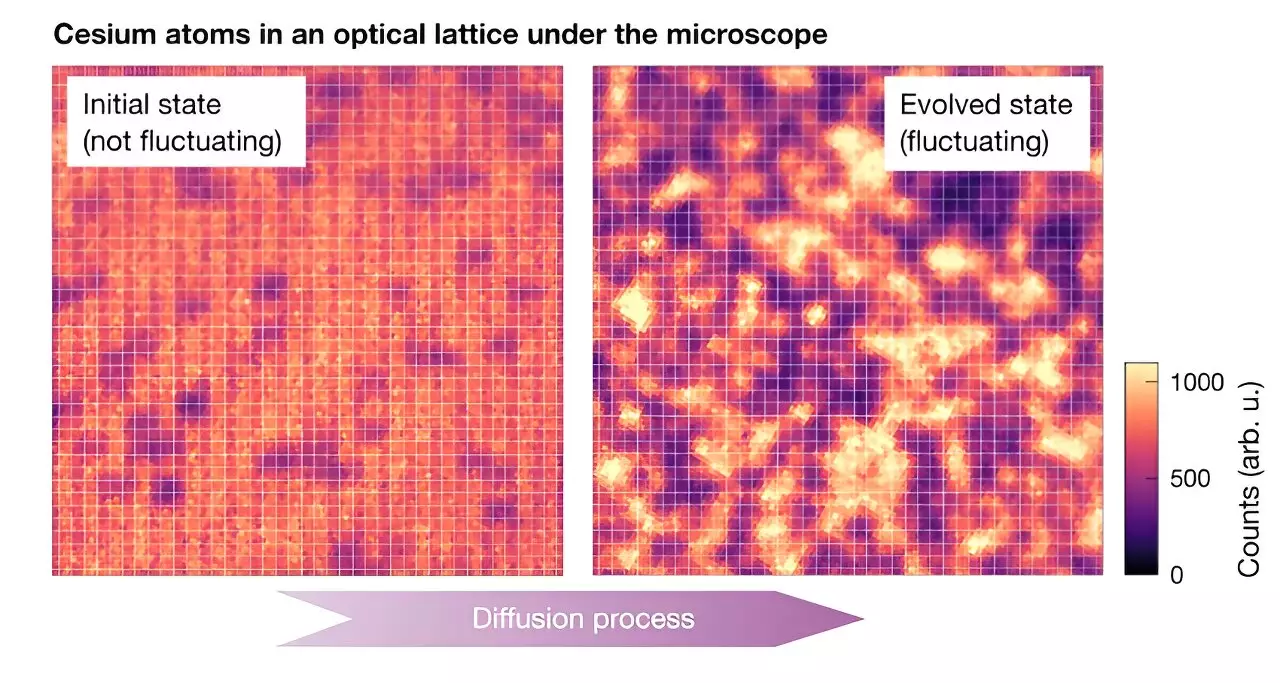Recent advancements in quantum physics owe much to the intricate studies conducted by researchers at Ludwig-Maximilians-Universität, along with their collaborators from the Max-Planck Institute for Quantum Optics, the Munich Center for Quantum Science and Technology, and the University of Massachusetts. Their groundbreaking paper, published in *Nature Physics*, focuses on the important topic of equilibrium fluctuations within large quantum systems, a field ripe with potential discoveries in understanding quantum mechanics. Unlike classical systems where outcomes can be predicted with straightforward methods, quantum systems present complexity due to the unique behavior of their constituents, particularly their chaotic nature.
Julian Wienand, a co-author of the study, emphasizes an essential challenge faced by physicists: simulating the behavior of a vast number of quantum particles. In theory, one could track the individual movement of each particle within a controlled environment, such as a confined box. However, real-world limitations regarding computational power restrict the feasibility of this approach. The sheer number of interactions and states that such a system can exhibit is staggering, introducing issues of resource allocation and processing capabilities.
The uprising of hydrodynamics offers a promising solution. Instead of focusing on individual particle dynamics, physicists can leverage hydrodynamic principles to describe particle interactions at a macroscopic level. By allowing the system to be viewed as a continuous density field—where the inter-particle interactions mimic a fluid—researchers can navigate the complexities of quantum systems more effectively.
Fluctuating Hydrodynamics: A New Perspective
The researchers delve into an advanced theoretical framework known as Fluctuating Hydrodynamics (FHD). By acknowledging that particles, although appearing to behave as a continuous field, are still subject to random fluctuations—akin to white noise—scientists can integrate these nuances into their understanding of quantum systems. FHD serves as an extension of classical hydrodynamics that not only describes the average behavior of a system under thermal fluctuations but also accounts for smaller-scale dynamics typically overlooked.
This new understanding is crucial, as it allows physicists to express complex systems through simple mathematical equations that represent key quantities, such as the diffusion constant. While FHD has seen successful applications in classical contexts, its relevance to quantum systems remains an intriguing area of exploration, opening doors for predicting how chaotic systems might behave.
Experimental Insights from Quantum Gas Microscopy
The experimental backbone of the researchers’ study involved utilizing a quantum gas microscope specifically designed for ultracold cesium (Cs) atoms. By creating optical lattices via carefully directed laser beams, they were able to confine and manipulate these atoms, generating a quantum many-body system ripe for observation. The unique capability of this microscope to visualize individual atomic sites allowed the team to obtain a clear quantitative measure of fluctuations, which proved invaluable for their analysis.
To assess the dynamics of this quantum many-body system, the researchers situated the atoms in an ordered pattern before abruptly altering the lattice’s depth. This manipulation instigated movement and interaction among the atoms, setting the stage for a diffusion process characterized by the evolution of fluctuations over time. By making real-time observations, they were able to validate their theoretical model, confirming that the behavior of their system conforms to the principles of FHD.
Implications of the Findings
The researchers’ findings provide an essential leap in understanding the intersection of classical and quantum physics, suggesting that even chaotic quantum behaviors can be approximated through simpler mathematical constructs. This discovery positions FHD as a powerful tool for physicists grappling with chaotic quantum systems, as it allows the translation of intricate microscopic behaviors into more manageable macroscopic descriptions.
Notably, Wienand highlights how the results bridge the gap between equilibrium and non-equilibrium dynamics in quantum settings, essentially positing that properties traditionally reserved for equilibrium can also be harnessed in out-of-equilibrium instances, yielding richer insights into quantum mechanics.
Looking ahead, Wienand and his team aim to expand their exploration of quantum fluctuations through further simulations. They seek to examine fluctuating behavior in systems that defy thermalization and investigate higher moments of fluctuations, such as skewness and kurtosis. By refining the application of FHD, they may unlock a deeper understanding of complex observables, ultimately enhancing our comprehension of the elaborate dynamics inherent in quantum many-body systems.
This pioneering study not only illuminates a compelling theoretical framework but also sets the groundwork for future endeavors in quantum physics. FHD represents a convergence between classical principles and quantum peculiarities, offering hope for unraveling the mysteries that have long obscured our understanding of the quantum world.


Leave a Reply